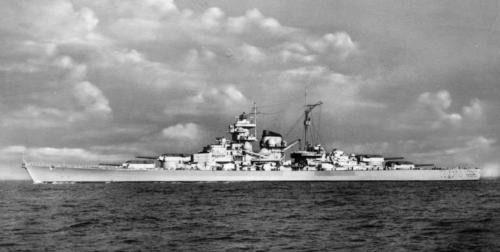Remembering the Telegraphist Air Gunners


copyright © Wartime Heritage Association
Website hosting courtesy of Register.com - a web.com company
Wartime Heritage
ASSOCIATION
The Destruction of a Battleship - The Tirpitz
On
the
night
of
September,
19-20,
1943
Tirpitz
was
attacked
by
midget
submarines
or
X
Craft,
Four
of
them
were
survivors
of
the
six
towed
across
the
North
Sea
by
Fleet
submarines.
X-10
aborted
her
operation
and
was
never
heard
of
again,
X-6
and
X-
7
were
successful,
through
the
crews
were
taken
prisoner.
Their
explosions
seriously
damaged
Tirpitz,
unseating
her
main
engines.
She
was
immobilized for several months.
Operation
Tunsten
was
another
attempt
to
sink
the
Tirpitz
in
April,
1944.
Specially
trained
Fleet
Air
Arm
pilots
and
crews
from
the
Carriers
Victorious
(72
aircraft),
Furious
(20
aircraft),
and
the
three
escort
carriers,
Pursuer
(18
aircraft),
Searcher
(24
aircraft) and Emperor (24 aircraft).
They
also
gave
coordinated
and
extra
cover
to
a
Russian
convoy.
Victorious
and
Furious
carried
bombers
and
the
other
carriers
provided
fighter
cover.
The
planes
attacked
in
two
waves,
scoring
fifteen
hits
but
the
battleship
was
saved
by
the
8”
thickness
of
her armoured main deck. She never served as a battleship again and was moved to Tromso were she acted as a floating battery.
Tromso
lay
within
RAF
bomber
range
and
on
the
12
November
1944
Lancasters
attacked
her
with
six
ton
bombs.
The
leviathan
capsized and Tirpitz was destroyed.
(Original article by David Brown; TAGA Newsletter January 2004;
Photo Credit Arthur Wells TAG)
Tirpitz
was
the
second
of
two
Bismarck-class
battleships
built
for
the
German
Navy
during
World
War
II.
Tirpitz
was
the
heaviest
battleship
ever
built
by
a
European
Navy
and
served
as
the
centrepiece of the Baltic Fleet.
In
1942,
the
ship
sailed
to
Norway
forcing
the
British
Royal
Navy
to
retain
significant
naval
forces
in the area .
In
September
1943,
Tirpitz,
along
with
the
battleship
Scharnhorst,
bombarded
Allied
positions
on
the
island
of
Spitzbergen,
the
only
time
the
ship
used
her
main
battery
in
combat.
Shortly
thereafter,
the
ship
was
damaged
in
an
attack
by
British
mini-submarines
and
subsequently
subjected
to
a
series
of
large-scale
air
raids.
On
12
November
1944,
British
Lancaster
bombers
destroyed
the
ship.
Two
direct
hits
and
a
near
miss
caused
the
ship
to
capsize
rapidly.
A
deck
fire
spread
to
the
ammunition magazine for one of the main battery turrets, which caused a large explosion.
Figures for the number of men killed in the attack range from 950 to 1,204.

The TAGs aboard HMS Furious following the Tirpitz raid



- World War I - Menu
- WWI Stories and Articles
- Photos - Yarmouth Soldiers
- Selection of World War I Songs
- WWI Casualties of Yarmouth, NS
- Those Who Served - Yarmouth, NS
- WWI Casualties Digby Co. NS
- WWI Casualties Shelburne Co. NS
- Merchant Mariners (1915) Yarmouth, NS
- Canadian Forestry Corps - Non Yarmouth Birth/Residence Enlistments
- US Draft Registry - Yarmouth NS Born


- World War II - Menu
- WWII Stories and Articles
- Telegraphist Air Gunners
- WWII Casualties of Nova Scotia
- US Casualties with NS Connection
- Far East/Pacific Casualties with NS Connection
- Merchant Navy Casualties Nova Scotia
- Nova Scotia WWII Casualties Holten Canadian War Cemetery
- D-Day Casualties - Nova Scotia
- CANLOAN Program Casualties - Nova Scotia
- Battle of the Bulge Casualties - Nova Scotia
- WWII Casualties Yarmouth NS
- Yarmouth Casualties - RCAF RAF Canadian Army WWII
- Yarmouth Co., Marrages WWII
- Casualties Non-Born/Residents with Connection to Yarmouth Co., Nova Scotia.
- WWII Casualties Digby Co., NS
- Non-Nova Scotian WWII Casualties Buried in Nova Scotia
- WWII RCAF Casualties Aged 16-18
- Brothers/Sisters Who Served - World War II













